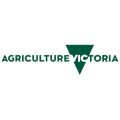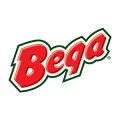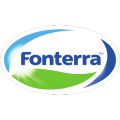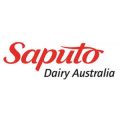Project Outcomes 2022-23
Enhancing energy generation from anaerobic digestion for the dairy industry (2022-23)

Project outcomes
Select the following heading to read more about the Project Brief
Description of the project:
Energy is a significant cost for the dairy industry and its use contributes to greenhouse gas emissions by the dairy sector. Anaerobic digestion and co-digestion has the opportunity to reduce energy costs while managing the by-products of the dairy industry. Dairy factory effluent as well as whey and other products from cheese factories are good feedstocks for anaerobic digestion. Co-digestion with biomass substrates from agricultural industries and other sources in dairy regions can increase biogas production. This project aims to identify and quantify biomass sources available in the major dairy regions of Victoria, that can be used in anaerobic digestion and co-digestion. In addition, a tool should be built that enables users to identify feedstock sources and their accessibility across Victoria . As in previous years students will prepare a report describing the work undertaken, and their findings and recommendations for the dairy industry. They will also present their work and the tool they have built to collaborating groups at the February Ellinbank Seminar.
Liquid waste mapping, water recycling and sludge management (2022-23)
Hosted by Bega

Project outcomes
Select the following heading to read more about the Project Brief
Description of the project:
Our Morwell Yogurt factory produces significant volumes of liquid waste and we’d like to develop a greater understanding of how much and what types of waste go through our water treatment plant and waste silos. This project has two parts; the first is to establish links between manufacturing processes and trade waste volumes going to trade waste with the goal to propose ideas to divert (cleaner) water flows that could be otherwise useful away from the biomass requiring treatment..
The second part of this project is to review our wastewater treatment plant sludge disposal and consider more effective ways to manage liquid flows. Students will be encouraged to consider alternative designs, equipment options and disposal methods in developing their recommendations.
1. Identify waste streams flowing to waste silos and wastewater treatment plant
2. Identify and propose suitable, more circular treatment/disposal options
Chemical & Water Monitoring & Optimisation through Clean-In-Place Systems (2022-23)
Hosted by Bega

Project outcomes
Select the following heading to read more about the Project Brief
Description of the project:
This project will showcase the Bega Cheese Koroit site’s manufacturing facility and will allow the students to obtain process experience and knowledge of operational areas. A key function of the processing is ensuring the plant is cleaned effectively to meet requirements for food safety & quality. This is achieved by clean-in-place (CIP) systems that use water, chemical & steam which eventually ends up in wastewater treated for irrigation.
The project will require students to learn the CIP systems and processes, map the process, capture required information to trend and monitor data to ensure repeatability and identify opportunities to reduce water and chemical while maintaining effective cleaning. Any changes will also require updates to current documentation. Students will be required to work in manufacturing areas with members from the site including the operations team, environment & continuous improvement teams, quality & automation.
Farm Environment Plan (2022-23)
Hosted by Fonterra

Project outcomes
Select the following heading to read more about the Project Brief
Description of the project:
Fonterra has been working to help our farmers to elevate good farming practice by establishing Farm Environment Plans (FEP) for their operations. Helping our farmers to develop FEPs is one aspect where Fonterra can make a difference to a Healthy Environment and areas such as soil health, water quality, carbon footprint and freshwater biodiversity.
The development of a FEP commences with an on-farm visit to identify priority modules for the farmer, and to gather key data and photos. Each FEP is unique to the farm, identifying areas of existing strength and prioritising improvement actions.
The program is fairly new with FEP development for farmers commencing in 2021. Fonterra is looking to improve the transactional process of the FEP – with an opportunity to integrate the collection of data, generation of a tailored report and implementation of actions into a seamless interface for the user. There is also an opportunity for students to learn more about the technical aspects of the assessment such as carbon calculators, GPS, soil nutrient measures, and leverage technology and innovation to incorporate these tools and data fields into a more user friendly platform for farmers to use.
Students will have the opportunity to interact with Fonterra farmers, experience a range of dairy farming operations first-hand and understand how farming links to our dairy manufacturing processes.
The program is young and largely dependent on manual processes. In improving the transaction process it is anticipated that the project team can leverage technology to streamline data collection on farm and create a user interface that is more interactive.
Technological Study of Farm Milk Collection (2022-23)
Hosted by Fonterra

Project outcomes
Select the following heading to read more about the Project Brief
Description of the project:
Milk collection is often perceived as the most challenging link in the dairy farming supply chain. Our Tanker Operators are the face of Fonterra at the farm-gate and on the road – with safety, customer service and quality at the forefront, it’s their role to get our milk from farm to factory. Our drivers are supported by the broader Farm Milk Collection (FMC) team who manage many complexities that come with scheduling milk collection from our farmer networks right across Victoria, Tasmania and further afield.
The capture of dairy farm and truck fleet performance data is integral for monitoring important aspects such as Collection in Full On Time (CIFOT) – the successful collection of ALL milk within the pick-up window allocated – to maximise milk quality, be financially sustainable and deliver outstanding customer service.
CIFOT is an integral measure of truck performance (schedule performance) against a farm collection window requirement. Fonterra believes there are opportunities to improve FMC financial performance without compromising on CIFOT performance. Furthermore, a recent small trial on vat based monitoring systems has indicated further investigations are worth pursuing.
Technology is evolving and has the capability to influence better FMC outcomes for aspects such as collection times, collection windows, robotic milking, and food safety and regulatory compliance. The technology study will focus on two project areas:
– Live Vat telemetry trial (vat based monitoring systems); and
– CIFOT Sensitivity Analysis to review CIFOT influencers such as cost of collection versus distance from factory, cost of planned diversion from nearest factory, vat surveys versus milk production volumes.
The MITI team will have the opportunity to learn about all aspects of Farm Milk Collection from farm-gate to factory and identify options for enhancing technological solutions to optimise runs, protect milk quality, improve environmental footprint and provide a better service for farmers. Aspects of the project will include going on-farm, understanding how collection works, and delving into the data in the back-end that pulls it all together.
Water Mapping - Darnum (2022-23)
Hosted by Fonterra

Project outcomes
Select the following heading to read more about the Project Brief
Description of the project:
A number of previous assessments have been completed at the Darnum site to understand water consumption across the factory and identify opportunities for water savings. Some upgrades have occurred on site in the last 2 years and further analysis is now required to understand how much water comes into the site and compare this to waste water flows going out. There are a few moving parts which will make this an interesting project as the site recovers cow water, has town water and also transports water to site via tanker, plus all the water streams are filtered in some way. Wastewater is stored in the lagoon system for irrigation and includes factory generated volume in addition to rainwater and stormwater contributions. Understanding water movement across the site will then help the project team to map out a long term plan to reduce water usage by 30%.
The project aims to identify and quantify all water input and output streams to make sure they balance. Gaps in achieving a full water balance can be identified and a plan to reduce water consumption in the longer term can be developed.
Development and Improvement of the Cobram site Environment Management System (2022-23)
Hosted by Saputo

Project outcomes
Select the following heading to read more about the Project Brief
Description of the project:
The General Environmental Duty (GED) which came into effect on the 1 July 2021 has shifted the onus of environmental protection from a prohibitions and license control model to a risk based and duties framework. In practical terms this means that anyone that performs an activity that may cause a risk of harm to human health, or the environment needs to minimise these risks as far as reasonably practicable.
For Cobram site this means that we need to review, update and improve the current environmental management systems to reflect the GED requirements.
This requires student team to build understanding of the GED requirements and identify and close the gaps in the current environmental management system.
This means getting familiar with the various inputs and outputs of the dairy production processes on Cobram site and how these can cause a risk in terms of the GED. Quantify these risks in terms of their impact (odour, noise or harm to human health for example) and identify solutions to manage and or reduce these risks. Document these findings in a risk management plan and build business cases to implement solutions identified, and lastly define a program which can be used to monitor the effectiveness of the risk management plan.
1) Develop a conceptual site model
2) Review / develop / improve the risk management plan based on the above model
3) Identify solutions that would enable reduction of risks
4) Develop a business case for the implementation of these solutions
5) Review / develop / improve a monitoring program that enables us to check the effectiveness of our risk controls and ensure we meet the GED.
Lactoferrin Yield Optimisation Project (2022-23)
Hosted by Saputo

Project outcomes
Select the following heading to read more about the Project Brief
Description of the project:
Initial understanding of the Leongatha Lactoferrin plant process (unique to Leongatha) required prior to investigating opportunities for optimisation of the Lactoferrin recovery system and review of the primary ion exchange plant.
Knowledge of Leongatha Lactoferrin process and ability to present workings to Leongatha management team. Understanding current performance of the recovery skid and primary ion exchange plant and identification and quantification of actions required to increase yield. Implementation of ongoing performance monitoring process that ensures maximum yield of in specification product
